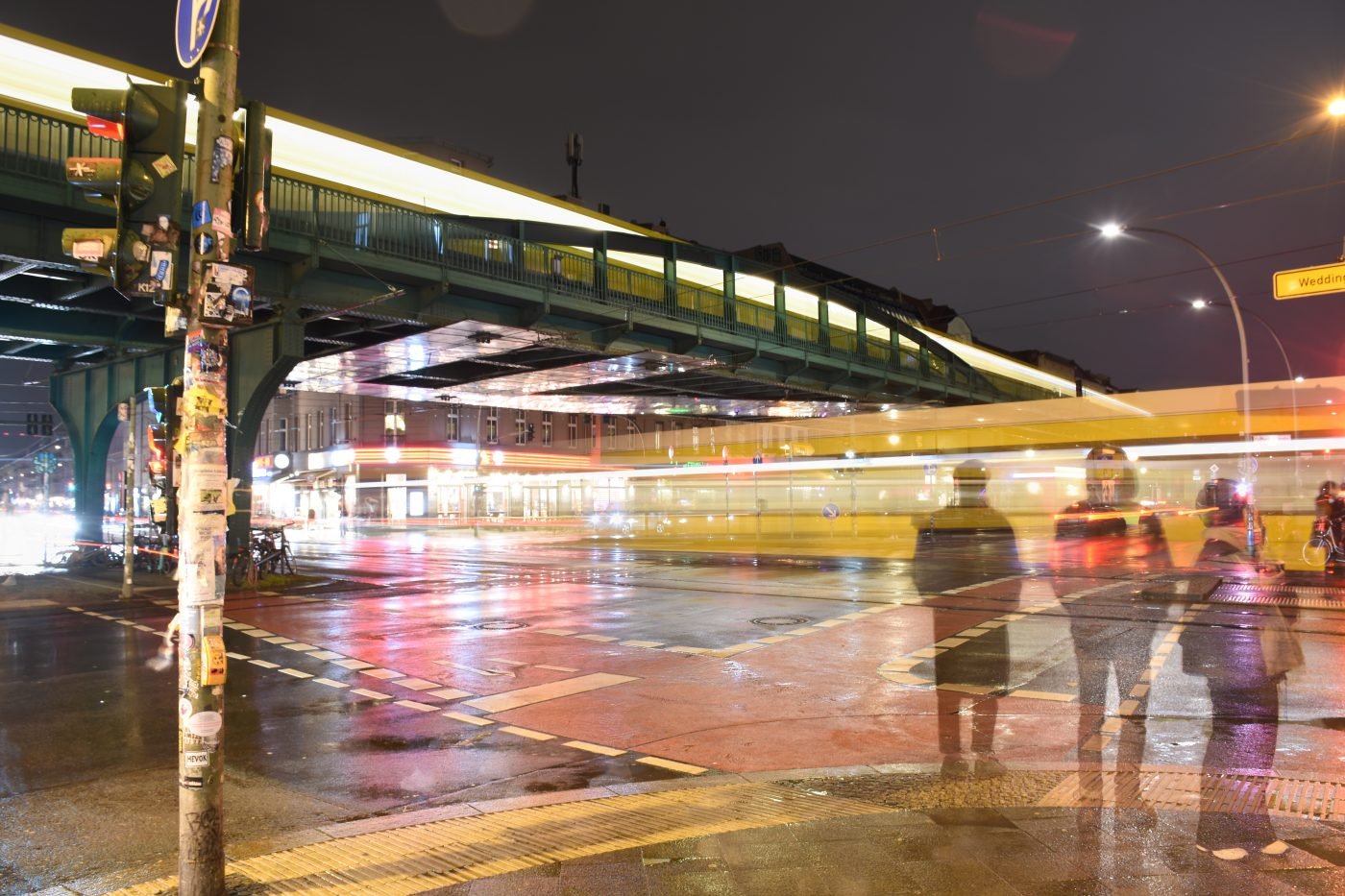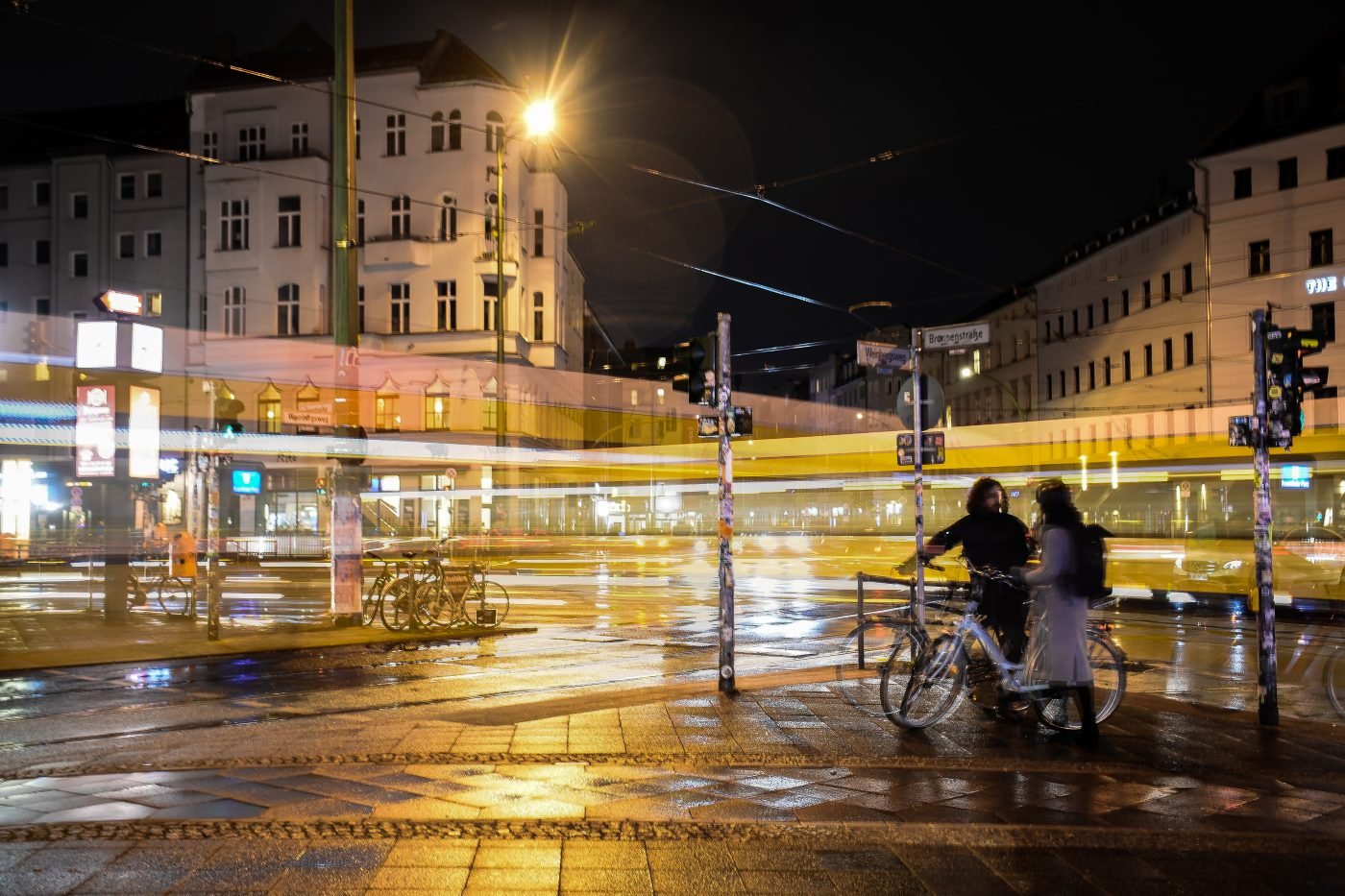Colours of the street
Street photography in Berlin
Stadtrauschen
(the noise of the city)
I decided to freeze the speed of the city, to capture the transience of its atmosphere in a photograph.
I came across Berlin and its fleeting rhythm, full of restless and pulsating colors. Among the contrasts, I can see the noise created by each part of the scene.
I can see many colors. Some are walking, others are being carried by the streetcar, as well as others are simply watching from the window.
Although the color palette is quite broad, it is easy to see that an encompassing tone prevails in it: longings and aspirations to be realized.
Of visual escapes and visionary apparitions
What colours does the street have? What colours does Berlin have? For over a year my project class my project class has been working on street photography in the capital. Our photographic photographic fieldwork did not focus on classic documentary perspectives, but rather on documentary perspectives, but rather on individual narrative forms of the street.
First of all, we took a look at the definition of street photography. In article from the British Journal of Photography from 1878, it is defined as follows as follows: "the photographing of views of the streets and street architecture generally, of our cities and towns..." Around the turn of the century, the French photographer Eugène Atget the turn of the century, the French photographer Eugène Atget captured the old Paris in a cumbersome way with a plate camera.
Primarily he was interested in documenting the streets. Whoever came in front of his lens had to take time for a longer shooting process, so that spontaneity can hardly be found in the pictures. can hardly be found in the pictures. Fifty years later, pioneers of street photography like such as Henri Cartier-Bresson or Robert Doisneau were already benefiting from the technical technical development and captured the true, "decisive moment" - or used the urban or used the urban environment for skilful stagings. With the increasing cameras became available, more and more amateurs took to the streets with their 35 mm camera camera and used the Weiwinkel lens to capture the immediate hustle and bustle around them. around them: unadulterated and right in the middle of it. To this day, the street photographers' demand for authenticity has not changed.
Since the beginning of the 21st century, photography has become more popular due to its digitisation and the rapid and the rapid dissemination via social networks, photography has become a mass medium. The flood of images also caused a softening or expansion of the original idea of street photography. idea of street photography. In order to safeguard the quality of the street photography genre, the British photographer Nick Turpin founded the first international collective of street photographers in 2000. He invented the term Candid Public Photography (candid= unposed, pure) and established rules, that would constitute 'true' street photography. As key aspects he mentions the renunciation of intervention during photography, the public space as a backdrop and the renunciation of and the renunciation of post-processing the pictures with the computer. So what is the special quality of street photography? According to Turpin's definition a good street photo captures a special, real event in an unspectacular public environment. public environment.
The art would consist in photographically highlighting the particular from the the unspecial, but without interfering with the setting. The dividing line between pure documentation and staging is fluid. In the end, only the framing during the photographic process alone bears witness to the subjective experience of the photographic eye and its individual authorship. The knowledge of this subjectivity inherent in the essence of photography thus widens the horizon and the horizon and breaks the boundaries of the purely documentary.
Ebba Dangschat, June 2022







